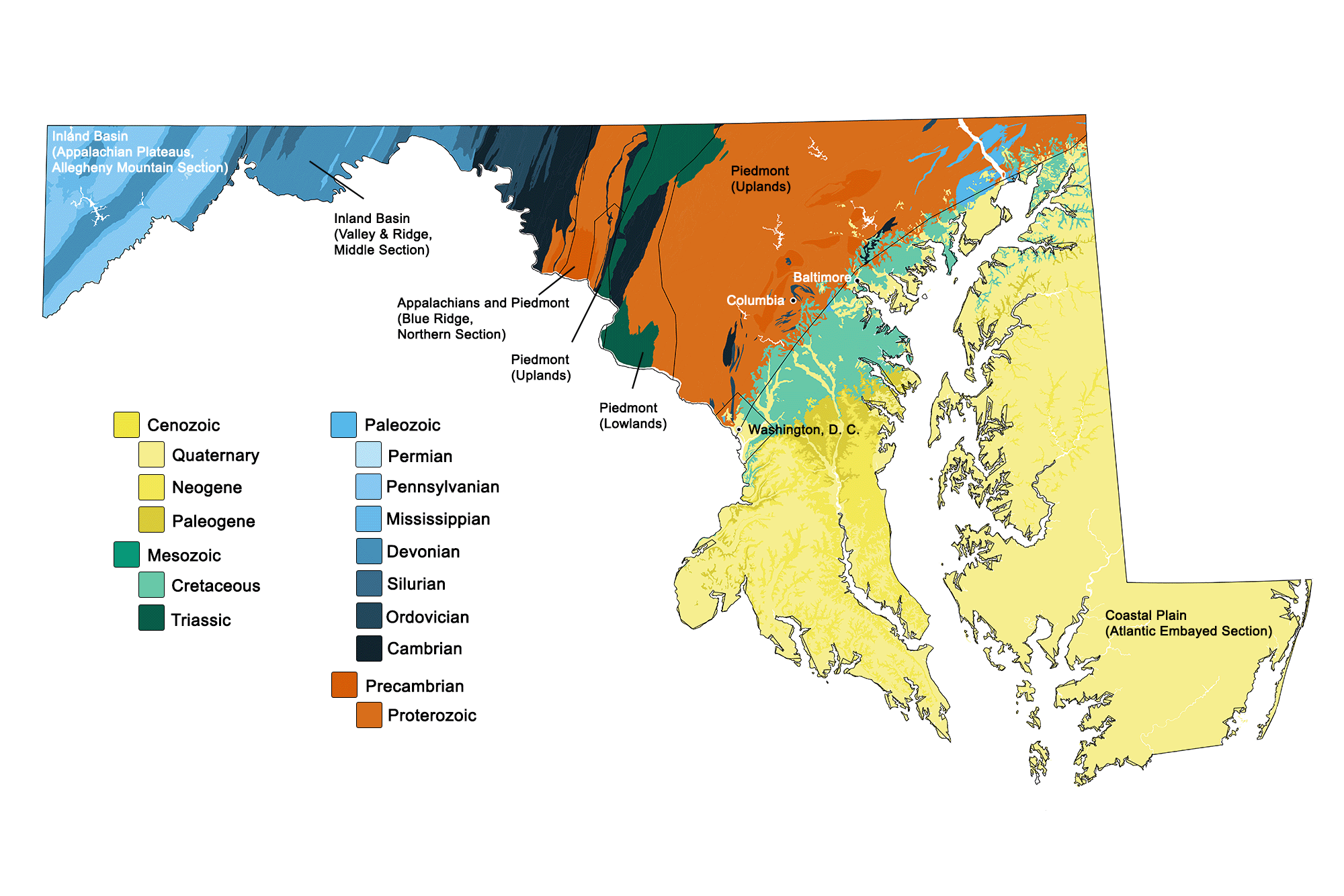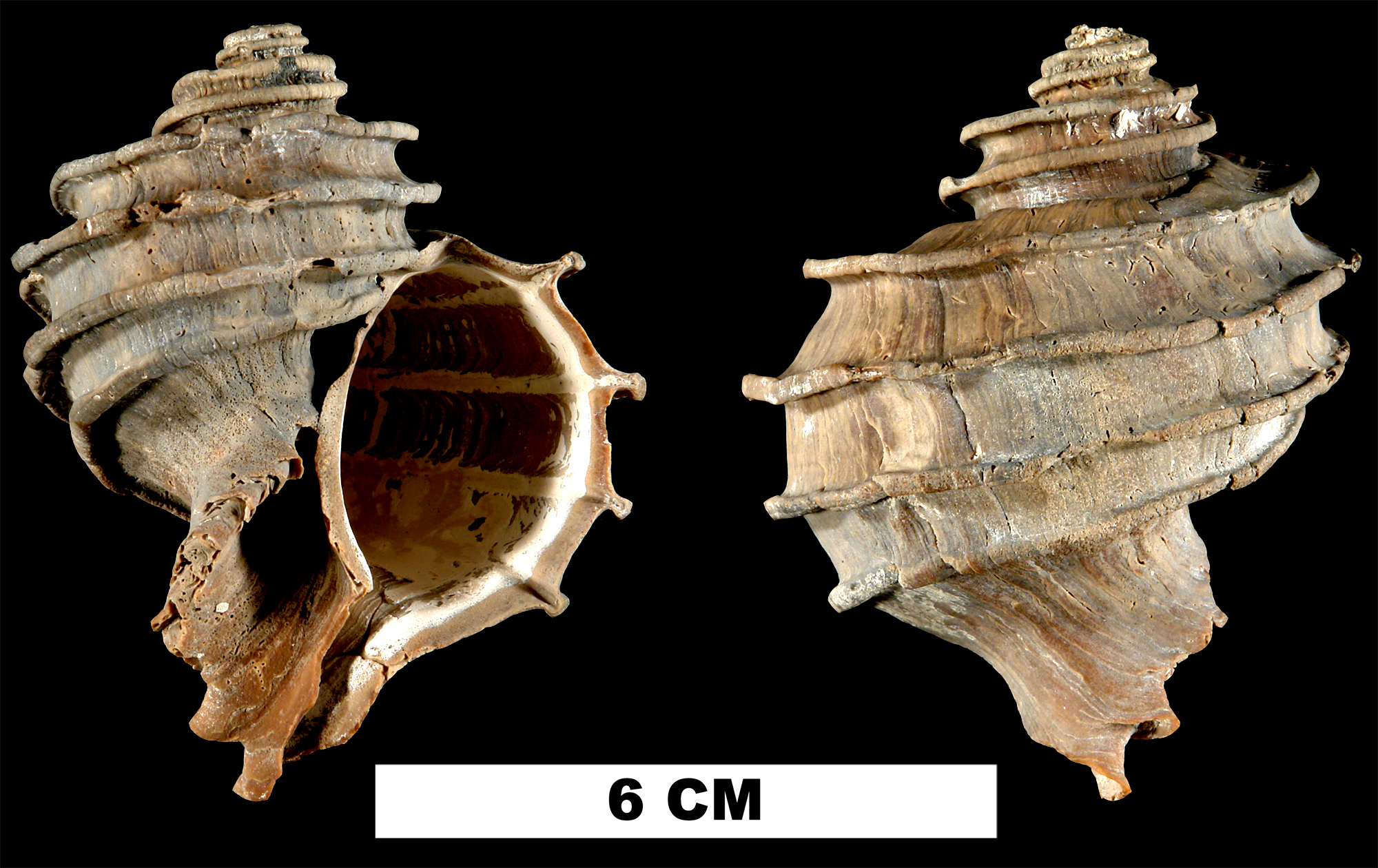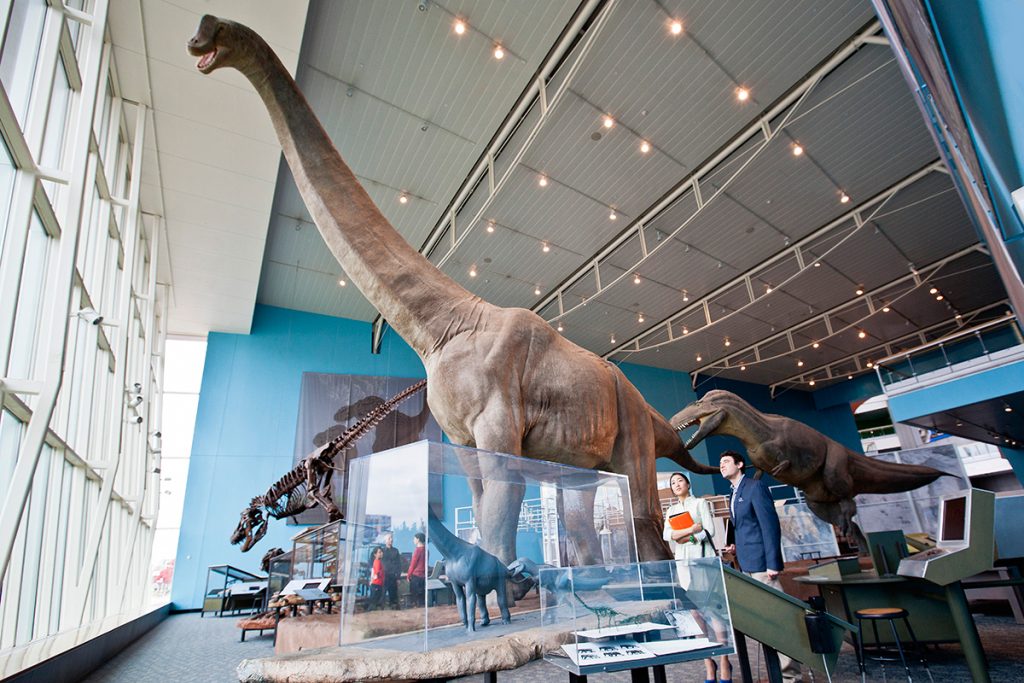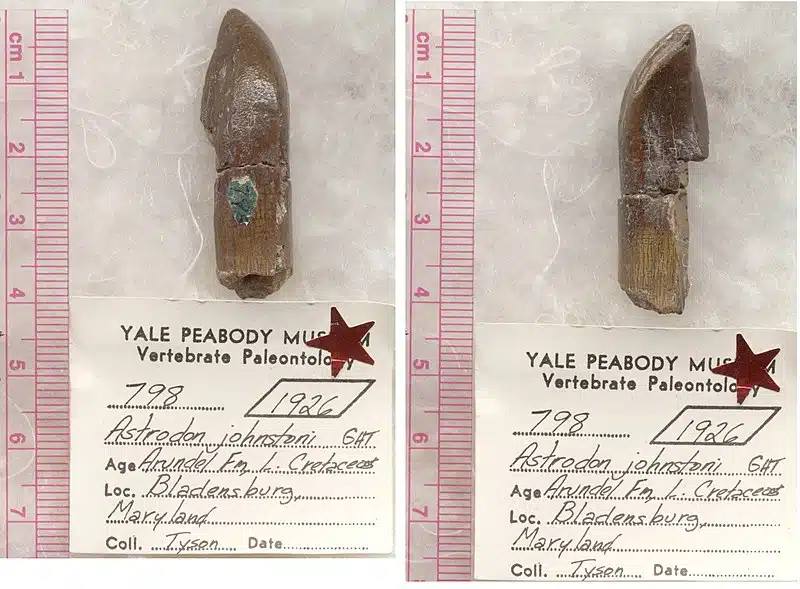
Fossils from various points in geologic history can be found throughout Maryland. The oldest fossils in Maryland come from exposures of the Araby formation around Frederick, dating from around 540 million years ago. Some of the most popular locations for amateur fossil collecting are along the banks of the Potomac River and the western shore of the Chesapeake Bay. These areas are famous for producing Paleocene and Miocene aged shark teeth (among other fossils) respectively. The Calvert Cliffs area along the Western Shore is especially famous, and has several public sites for collecting fossils, including Calvert Cliffs State Park. The Cretaceous Potomac group, which covers much of D.C and surrounding areas, sometimes preserves rare dinosaur bones and footprints. The Dinosaur Park in Laurel allows visitors access to the Arundel Clay, a subdivision of the potomac group. Visitors can search for fossils, though important artifacts are kept by the park for research. Cambrian fossils, including trilobites, can be found in parts of Western Maryland, though in small amounts.
More information regarding specific fossil hunting sites in Maryland and surrounding states can be found on the FossilGuy.com website:
Related Images:

A simplified geologic map of Maryland, showing the ages of the rocks found in different regions. (Source)

Ecphora gardenerae, Maryland's state fossil, and the first fossil described from Maryland, and North America as a whole. (Source)

A statue of Astrodon, Maryland's state dinosaur, at the Maryland Science Center in Baltimore. (Source)

The type specimen for Astrodon johnstoni, Maryland's state dinosaur. (Source)